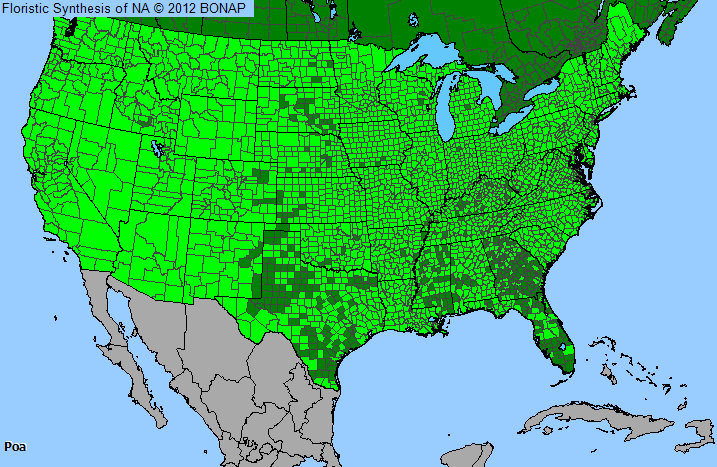
Plant Allergy Overview
Allergenicity
Severe
Pollen Season
Spring to Fall
Type
Grass
Sub-Type
Perennial
Allergy Information
This is one of the more significant grass types in terms of allergy.
Genus Details
These grasses, commonly called blue or June grasses, are low to moderately tall slender perennials or annuals, usually with open seed heads and flat leaf blades. This genus has about 64 species or types in the U.S. in temperate and cold regions. Most species are used for forage or as lawn grasses. Flowering usually occurs in May to June with Canada bluegrass (P. compressa) blooming in June to August. Annual bluegrass (P. annua) is a low spreading grass that was introduced from Europe and is now naturalized in North America. Canada or wire grass, is a low perennial native to Europe, with blue-green stems and narrow seed heads. Plants shed large amounts of pollen during June to August which can cause serious pollinosis. Kentucky bluegrass, (P. pratense), a common lawn grass native to Europe, is a slender perennial that is 1 to 3 feet in height with flat, narrow leaves and a spreading seed head. This bluegrass is one of the most serious hayfever grasses in northern areas of the U.S. Rough bluegrass, (P. trivialis), a perennial with an erect, rough stem, resembles Kentucky bluegrass and is commonly not distinguished from Kentucky bluegrass in literature. Pollen shed is greatly reduced when blue grass in lawns is frequently cut to prevent flowering.
Pollen Description
Grains are spheroidal to ovoidal, sometimes elliptical. The exine is thin and the surface is granular to finely reticuloid. Poaceae apertures are 1-porate, with the pores usually circular to ovoidal.
Grains are 22-122 micrometers in diameter.
Genus Distribution

The shaded areas on the map indicates where the genus has been observed in the United States.
 - Native, observed in a county
- Native, observed in a county  - Introduced, observed in a county
- Introduced, observed in a county  - Rarely observed
- Rarely observedAllergens & Plants Search
Enter a full or partial species name to find more information on one of over 1,200 potentially allergenic plants.
For example, you can find chenopods searching on "cheno"


